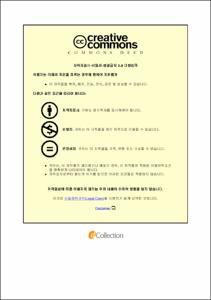2015 개정 교육과정에 근거한 중학교 2학년 영어 교과서 쓰기 활동 분석
- Abstract
- The purpose of this study is to analyze writing activities in second year middle school English textbooks in order to improve the English writing skills of middle school students. An attempt was made to find out if the English textbooks include various types of writing activities, and various genres, and if they satisfy the standards for achievement of the 2015 revised curriculum, and to also make suggestions in order to encourage better and more diverse activities in writing areas as a result of the analysis. To provide better writing guidance to second year middle school teachers in public schools, the 2015 revised curriculum was conducted with a focus on analyzing the type and genre of writing activities in English textbooks for the second year of middle school.
An analysis of writing activities based on the degree of control showed that current second-year middle school English textbooks containing free writing were sparse, with the majority of textbooks containing controlled and guided writing. Writing activities using controlled writing account for 31.4 percent of the total. However, there are many step-by-step and complex activities in which controlled writing is done prior to the next stage of guided writing. All textbooks include writing activities that lead to guided writing after controlled writing.
As a result of writing activities pertaining to the genres of writing, descriptive writing (25%) comprises the highest percentage in English textbooks for second-year middle school students. Narrative writing (22.5%) make up a relatively high percentage of the writing activities compared to the others, followed by persuasive writing (20%) and informational writing (17.5%). Journal writing makes up a relatively low percentage at 12.5 percent and is not used in some textbooks. Writing activities related to poetry appear only one time and in only one textbook, accounting for 2.5% of the total.
Among the achievement criteria designated by the Ministry of Education, 27.5% of the writing activities require students to describe objects or situations pertaining to daily life, and 22.5% require students to write their opinions regarding daily life. 5% of the writing activities comes from writing simple invitations, thank you letters, congratulations, letters of consolation, and diaries.
The implications of the study results are as follows:
First, all textbooks are comprised mainly of guided writing, but they also consist of some controlled writing, free writing, and step by step writing. Even though it is more difficult for students to participate in free writing because of less guidance and control, practice with this type of activity is needed so students can progress to more independent writing.
Second, in examining writing activities by genres, the textbooks generally include writing activities in various genres, but some textbooks do not contain all six writing genres, so it is necessary to ensure all textbooks contain writing activities in all genres. If learners practice writing with a textbook that contains various genres of writing, they will be able to write appropriately in various situations that they encounter in their daily lives.
Third, second-year middle school English textbooks generally consist of writing activities that meet the achievement criteria in the English writing section of the 2015 revised curriculum, but teachers must guide learners not only to complete the writing activities but also to gain awareness of the core competencies associated with the achievement criteria through their writing activities.
- Issued Date
- 2020
- Awarded Date
- 2020. 8
- Type
- Dissertation
- Publisher
- 부경대학교
- Affiliation
- 부경대학교 교육대학원
- Department
- 교육대학원 영어교육전공
- Advisor
- 오준일
- Table Of Contents
- 1. 서 론. 1
1.1 연구의 필요성 및 목적. 1
1.2 연구 문제 4
1.3 연구의 제한점 . 5
2. 이론적 배경. 6
2.1 쓰기의 정의 6
2.2 쓰기의 필요성 10
2.3 교과서 쓰기 활동에 대한 선행연구 12
3. 연구 방법. 20
3.1 분석 대상 20
3.2 분석 영역 21
3.3 분석 기준 22
3.3.1 통제 정도에 따른 분석 . 23
3.3.2 장르에 따른 분석. 33
3.3.3 성취 기준에 따른 분석 40
3.4 자료수집 및 분석절차. 48
4. 분석 결과 및 논의 49
4.1 통제 정도에 따른 분석 49
4.2 장르에 따른 분석. 53
4.3 성취 기준에 따른 분석 57
5. 결론 및 제언 62
5.1 결론. 62
5.2 제언. 63
참고문헌 66
- Degree
- Master
- Files in This Item:
-
-
Download
 2015 개정 교육과정에 근거한 중학교 2학년 영어 교과서 쓰기 활동 분석.pdf
기타 데이터 / 1.04 MB / Adobe PDF
2015 개정 교육과정에 근거한 중학교 2학년 영어 교과서 쓰기 활동 분석.pdf
기타 데이터 / 1.04 MB / Adobe PDF
-
Items in Repository are protected by copyright, with all rights reserved, unless otherwise indicated.